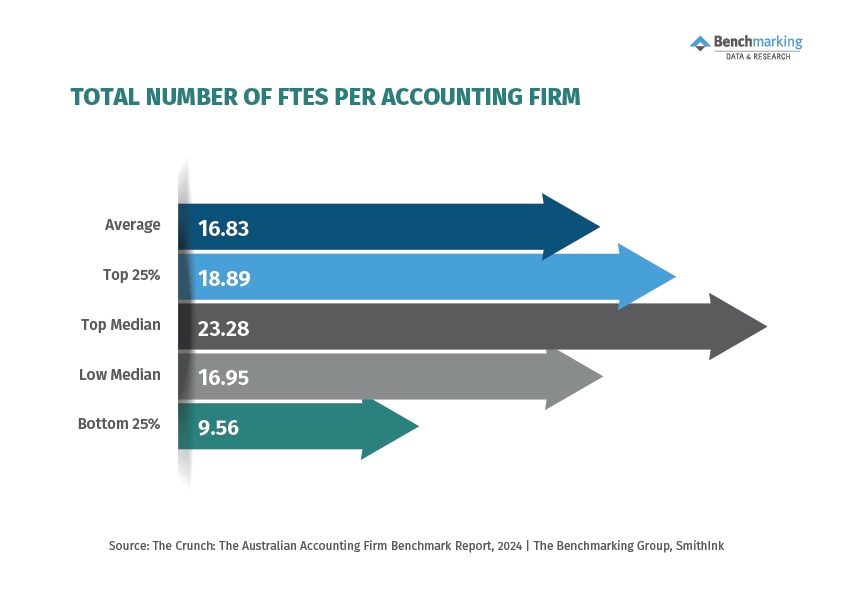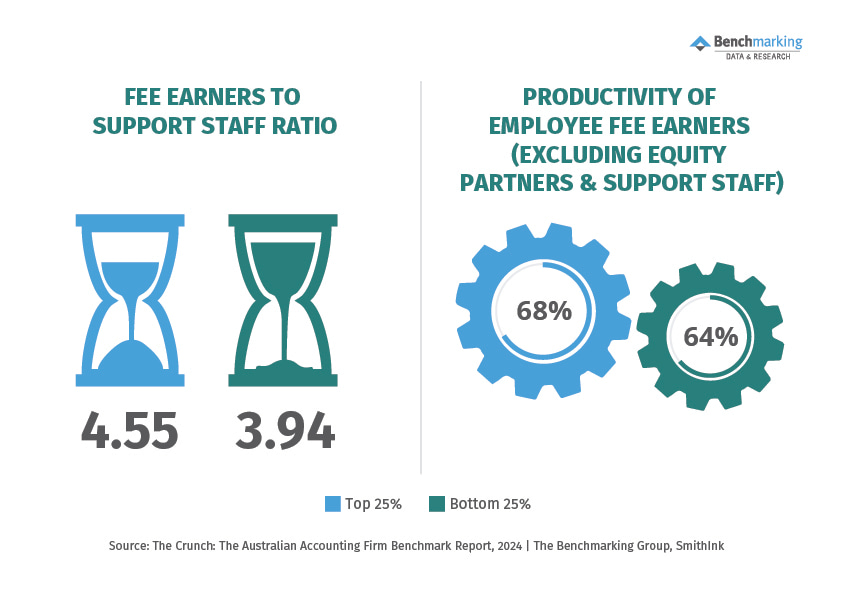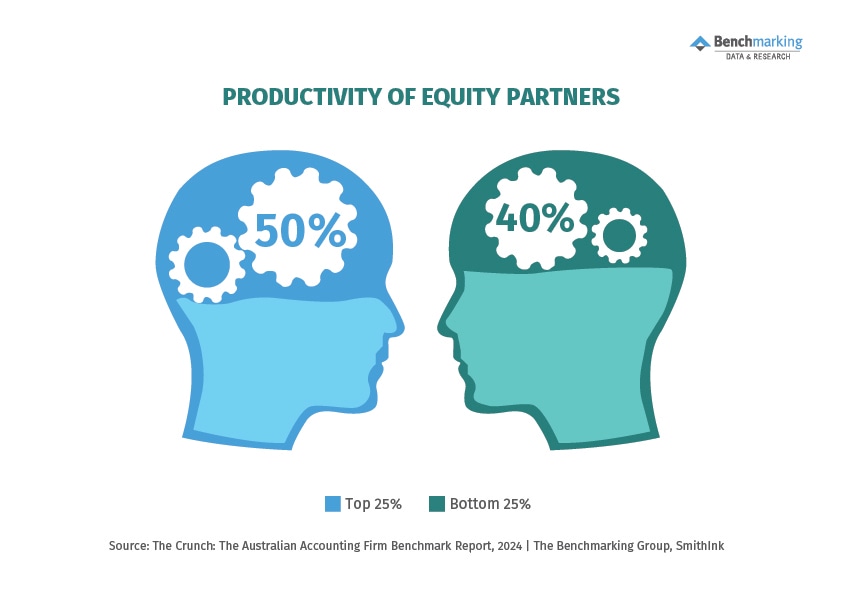You’re out of free articles for this month
For example, when firms are too small, they may miss opportunities for efficiency, but as they grow too large, bureaucracy and administration can cause inefficiencies, reducing productivity and impacting profitability.
Insights from the 2024 Crunch Report – The Australian Accounting Firm Benchmark Report provided real-world evidence of this concept. Analysing more than 100 small to medium accounting firms across Australia, the report sought to determine what sets high performers apart from their less profitable peers. To ensure fair comparisons, a standardised, notional full-time equivalent (FTE) partner salary was applied, and firms were ranked according to net profit margins.
Here is what we found.
The SME FTE sweet spot
Contrary to the common assumption that larger firms inherently yield higher profits, the Crunch report revealed that firms with 18-20 FTEs outperformed both smaller (fewer than 17 FTEs) and larger (more than 20 FTEs) firms.
Eighteen to 20 FTEs appeared to demonstrate the tipping point for firms in terms of maintaining higher efficiencies.

But achieving this optimal size is not a “silver bullet” to productivity as not all employees impact the bottom line equally.
The research showed that the composition of the team was just as significant as the total number, which is positive news, whilst the industry continues to struggle with a persistent skills shortage.
The power of the fee earner
Firms in the top performance quartile employed, on average, 0.6 FTE fewer support staff per fee earner than their lower-performing counterparts. In real terms, the top quartile employed one support staff for every 4.55 FTE fee earners, whilst the bottom quartile employed a support staff for every 3.94 FTE fee earners.

While it may seem obvious that firms with more fee earners generate higher profits, it is important to recognise that this model requires deliberate effort.
The data suggests that efficient management of administrative and non-billable tasks allows firms to allocate more resources to fee-earning activities, thereby enhancing profitability.

However, this streamlined approach brings its own set of challenges. Reducing reliance on support staff requires firms to adopt innovative technological solutions, automate routine tasks, and carefully manage workloads to prevent excessive strain on fee earners. This has been highlighted as one of the top challenges for accounting firms for 2025 in numerous reports.
In addition to being less reliant on support staff, fee earners in high-performing firms were also more productive in general.
When excluding partner FTEs, the profitability gap was only 6%. While this may seem small, when applied across a team of 10-20 FTEs, the earning opportunities become significant.
Productive partners
One of the more significant findings was the impact productive partners had on profitability. High-performing firms reported partner productivity rates of 50 per cent, compared to only 40 per cent of the lower-performing firms.
The ability of partners to charge more billable time per day greatly impacted firm performance.
Since these partners have fewer support staff than their counterparts, the data suggests they focus on building efficiencies rather than simply expanding their firms.
Productivity rates versus overtime
It’s important to note that high partner productivity or employee productivity should be focused on streamlining routine operations, building team efficiencies and leveraging technologies as opposed to increasing the sheer number of hours worked.
There has been an increasing number of accountants who are feeling burnt out in the industry, with one report stating: “Excessive working hours have long been viewed as 'business as usual' for accounting and finance firms worldwide.”
However, extra time does not necessarily equate to extra profit. Employee energy and productivity gradually decline when they consistently work long hours.
This has also been proven by four-day workweek trials, which often increase productivity and output.
Size does matter – sort of
There is no arguing that the Crunch data clearly showed where the FTE “efficiency sweet spot” is for SME Australian accounting firms.
To be exact, it’s 18.89.
But this number shows correlation, not causation. And therefore, implementing it as a strategic target will not necessarily result in great rewards.
Instead, the data shows firms should focus on creating efficiencies and improving productivity at their current size.
There is little to no research suggesting that improving efficiencies harms a business.
However, many cases demonstrate that bigger does not always mean better.
By Julia Thomson, head of data analytics & content, The Benchmarking Group
This data is from the 2024 Crunch Report - The Australian Accounting Firm Benchmark Report. The report analysed more than 100 small to medium accounting firms across Australia, providing valuable insights into profitability, growth, operational efficiency, and the challenges firms face today. The 2025 report is currently open for participation. Source: https://benchmarking.com.au/accounting-industry-report

 Login
Login









